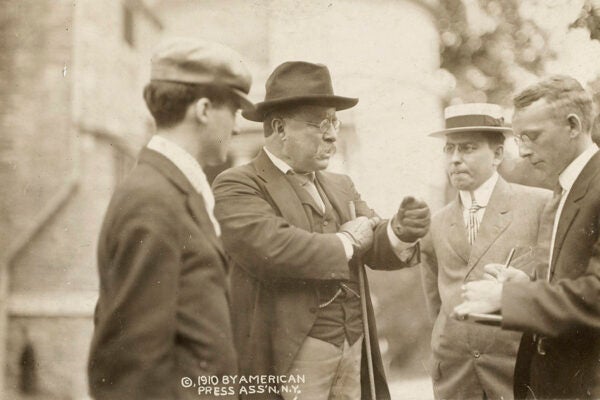The U.S. Supreme Court recently heard a case involving a UPS driver who was forced to take unpaid leave after becoming pregnant. In 2006, driver Peggy Young’s doctor told her not to lift anything over 20 pounds during her pregnancy. Instead of offering her light duty, as was common for workers who were injured on the job, UPS put her on temporary leave.
In a 1986 paper in the Journal of Public Health Policy, Susan Kelemen Gardin and Gary A. Richwald trace how the legal status of pregnant workers has shifted over the years. One early Supreme Court case in 1908 upheld a law limiting the working hours of all women. The Court opined that since “healthy mothers are essential to vigorous offspring, the physical well-being of woman becomes an object of public interest and care in order to preserve the strength and vigor of the race.”
Laws promising to protect women by discriminating against them in the workplace became common, and it was only in 1964, with the passage of Title VII of the Federal Civil Rights Act that they were invalidated. But, even then, it was unclear how actual pregnancies should be treated. The Equal Employment Opportunity Commission, which implements Title VII, initially decided that maternity could be excluded from rules governing temporary disabilities, but it later reversed itself.
Supreme Court cases during the 1970s involving disability insurance and mandatory leave policies for pregnant workers narrowed anti-discrimination protections. For example, in a 1976 case involving General Electric’s disability insurance, the Court held that the plan need only provide the same benefits to male and female workers and shouldn’t be required to cover an “additional risk, unique to women.” It also maintained that pregnancy should not be treated like other disabilities because it was “voluntary.”
Gardin and Richwald note that there were issues with the decision, including the fact that G.E. did not exclude other voluntary injuries like attempted suicides and cosmetic surgeries—or, for that matter, vasectomies.
In response to the Supreme Court rulings, in 1978, Congress passed the Pregnancy Discrimination Act, specifically bringing Title VII protections to pregnant workers.
The idea that pregnancy should be treated as a disability—something the Supreme Court case will clarify when it issues a ruling in the latest case, probably next June—has been the key to many protections offered over the years. But Gardin and Richwald argue that it’s an incomplete solution for women who want both children and a job.
“In all other major industrial countries, maternity benefits such as paid leave before and after childbirth, reinstatement rights, and ‘excused’ nursing breaks from work are guaranteed through national legislation,” they write. “Such benefits derive from a national perspective respecting women for their essential participation in the workforce and their unique ability to bring forth life.”
Whatever the Supreme Court decides, it won’t bring the U.S. up to that standard.







